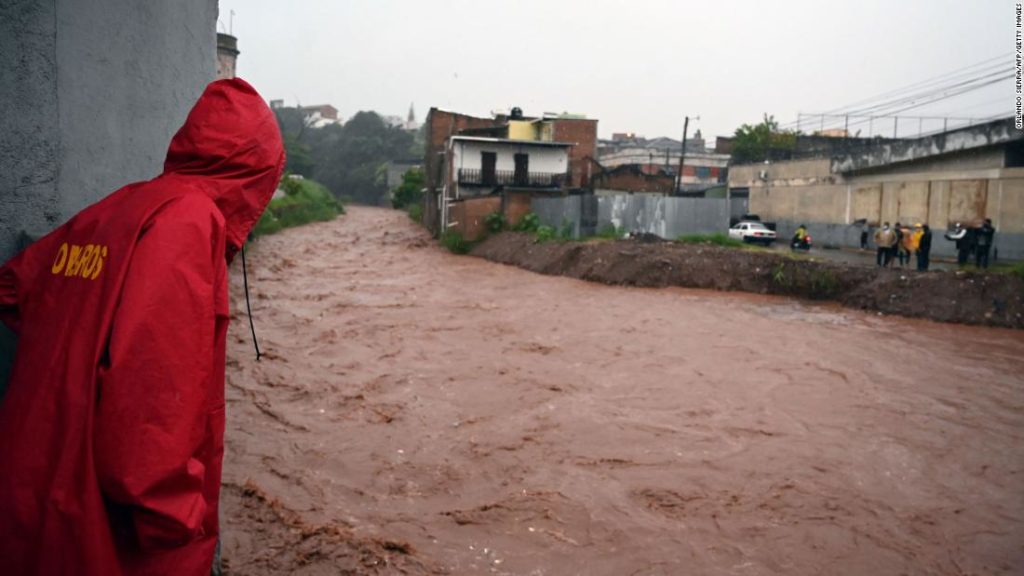Now, 99.5% of properties on the Nicaraguan Caribbean coast are without electricity, the country’s National System for Prevention and Attention to Disasters (Sinapred) said Tuesday. And four adults and two minors have died in the country as a result of Iota’s impacts, Nicaragua’s Vice President Rosario Murillo said.
Though the wind speeds are dying down, Central America is still at risk for life-threatening flash flooding, river flooding and mudslides. But already parts of the region are coping with overloaded rivers bursting to flip roofs onto streets and down electrical poles.
40,000 people impacted
Even before Iota struck, about 3.6 million people across Central America had been affected by Eta, a storm that hovered for days over Nicaragua, Honduras and Guatemala, with heavy rains creating flooding and landslides that wiped out entire communities.
Dozens of people in the remote Guatemalan village of San Cristobal remain missing after a landslide swept through last week, leaving mud 50 feet deep in some places.
And now more than 400,000 people in Nicaragua have been affected by the strongest storm to hit the country, Murillo said. Over 62,000 people in the Central American nation have been moved into 683 government shelters following the storm, the country’s government said on national television Tuesday.
The storm has dumped heavy rain, with Honduras and large portions of Nicaragua, Guatemala and Belize expecting at least 10 inches and up to 30 inches through Thursday, while areas from El Salvador to Panama can expect 4 to 8, with isolated maximums of 12 inches.
There is almost no communication with the city of Bilwi, also known as Puerto Cabezas, due to blackouts and fallen electrical cables.
In several cities in the Rivas region of Nicaragua, a strip of land between Lake Nicaragua and the Pacific Ocean in the nation’s southwest, authorities are monitoring rivers and placing vulnerable families in shelters, NHC said.
Colombian island of Providencia mourns victims of the storm
At least two people are dead, and one is missing on Providencia, Colombia President Ivan Duque said on Tuesday. One hundred and twelve people were evacuated from the island Tuesday, among them six seriously injured.
“We are glad that, thanks to our preparations and the measures we took, the community of Providencia has not been affected by a huge death toll,” Duque said. “We mourn, though, the loss of two people.”
The island’s infrastructure has been completely wiped out, Duque said. The priority is now to clear the island of debris and set up emergency campsites and field hospitals as quickly as possible.
Local Mayor Jorge Norberto Gari Hooker had ordered a total curfew from Sunday evening and set up 15 municipal shelters for population to hunker down in.
The islands of San Andres and Providencia, located just northwest of Colombia’s mainland, have for the first time in recorded history felt the impact of a Category 5 hurricane, Duque said on Monday.
CNN’s Stefano Pozzebon, Hollie Silverman, Gene Norman and Robert Shackelford contributed to this report.
You may also like
-
Afghanistan: Civilian casualties hit record high amid US withdrawal, UN says
-
How Taiwan is trying to defend against a cyber ‘World War III’
-
Pandemic travel news this week: Quarantine escapes and airplane disguises
-
Why would anyone trust Brexit Britain again?
-
Black fungus: A second crisis is killing survivors of India’s worst Covid wave

